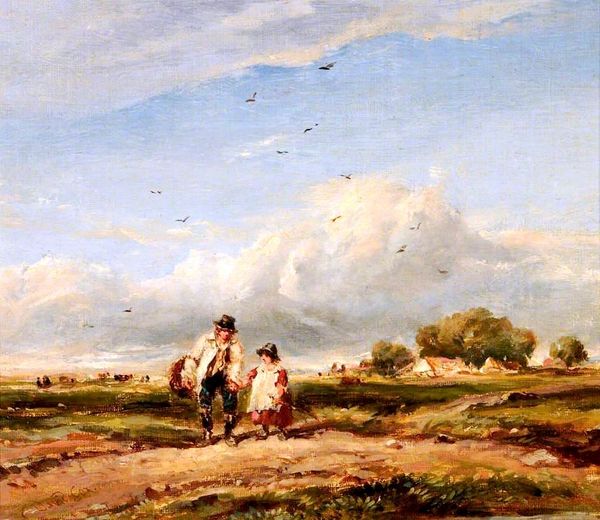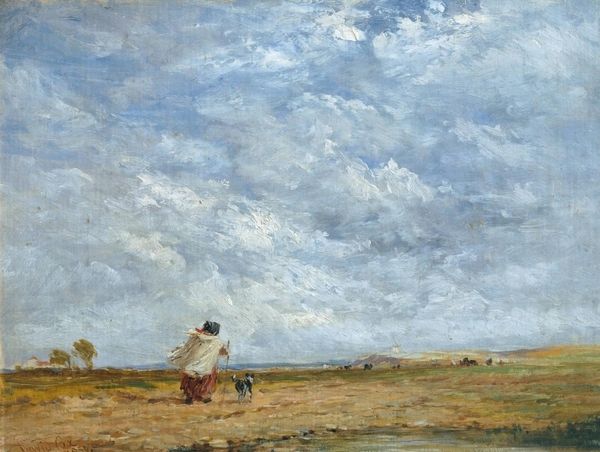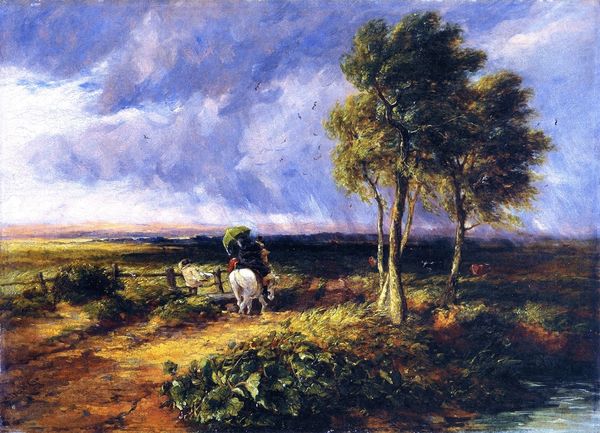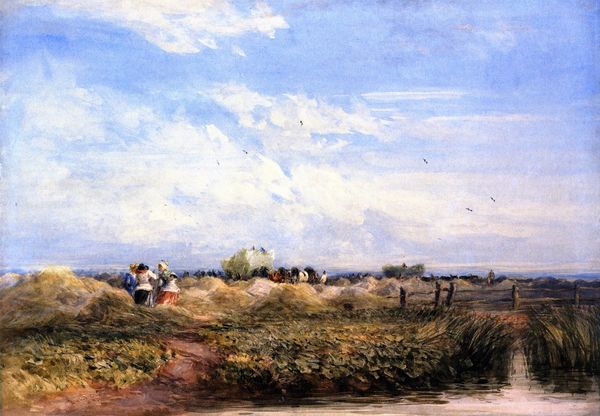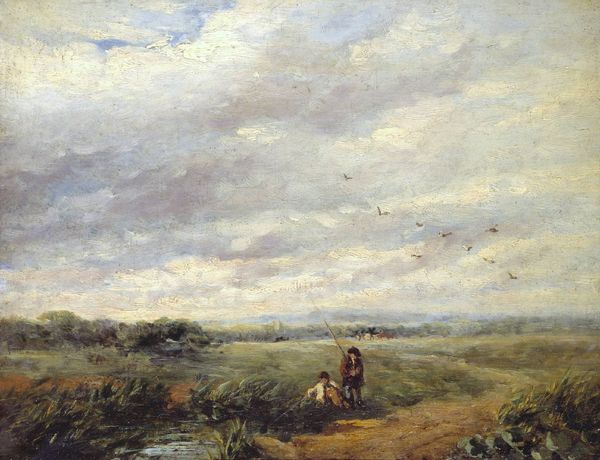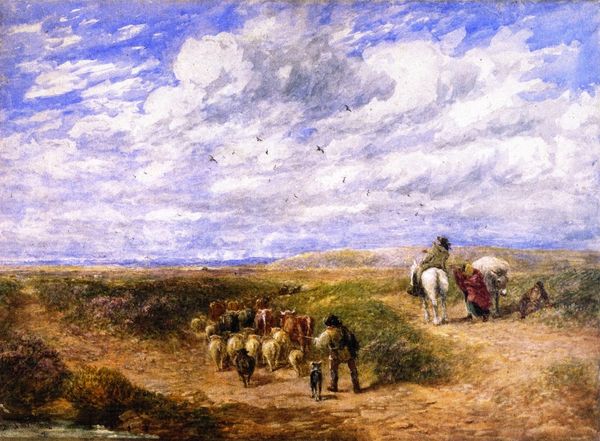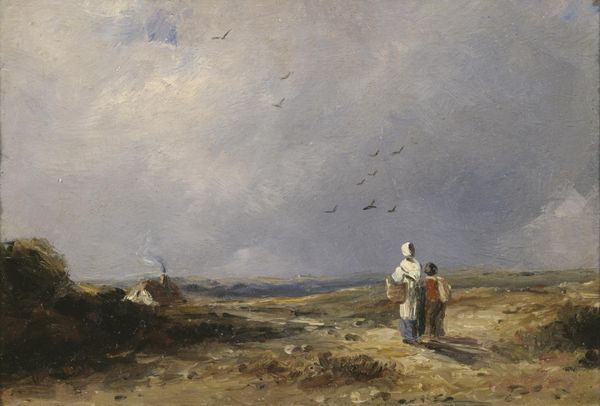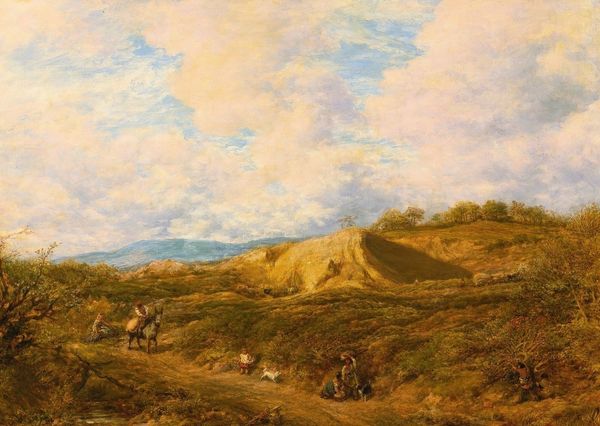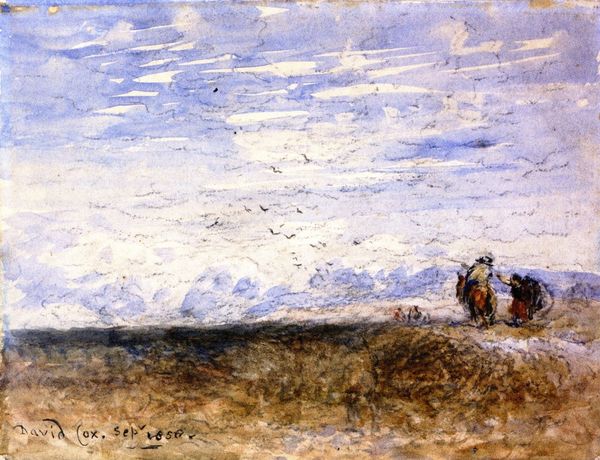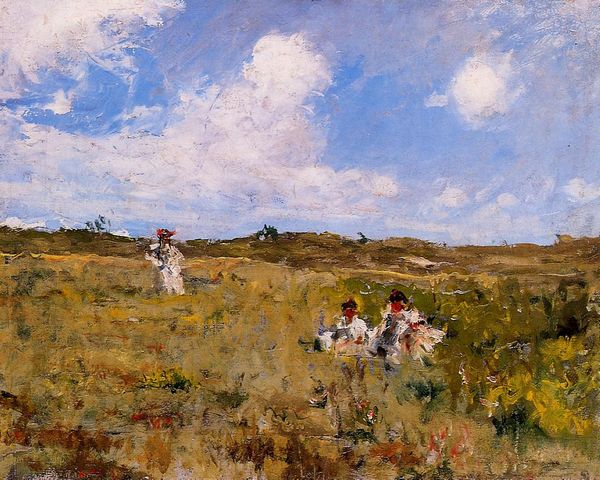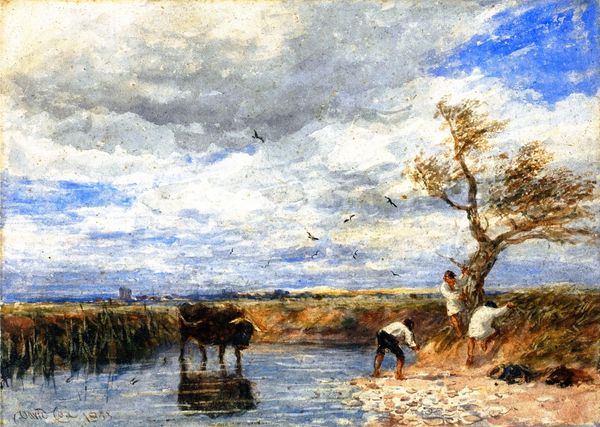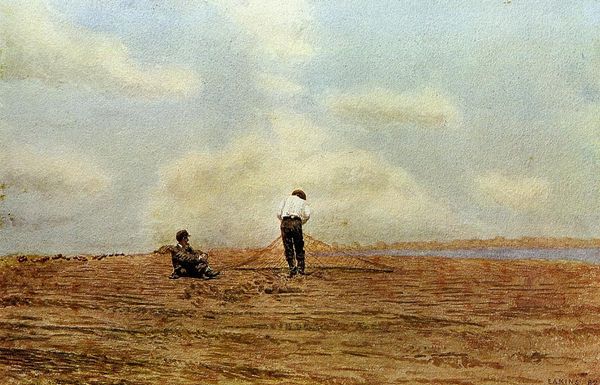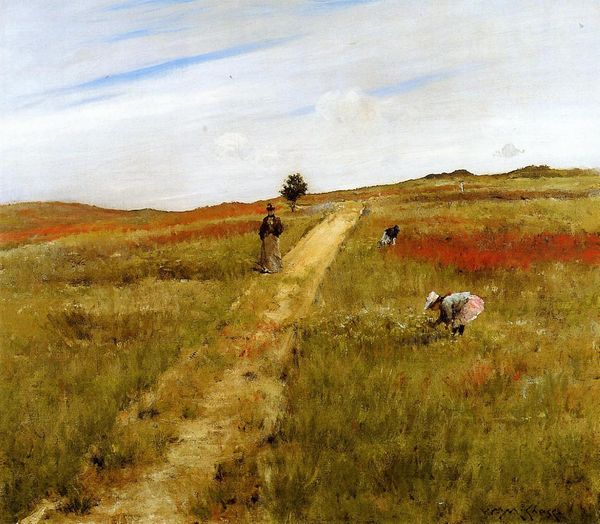
Copyright: Public domain
Curator: David Cox's 1853 watercolor, "Flying the Kite," presents a scene of leisure against the backdrop of an expansive landscape. Editor: The scene feels a bit melancholic to me; the vastness of the landscape and the cloudy sky overshadow the figures, don’t you think? There is something about their stillness that strikes me as sad. Curator: The atmospheric effects achieved through watercolor certainly lend a contemplative mood. Look at the visible brushwork and the blending of colors – they aren't just depicting a sky, they're constructing a tangible atmosphere. Considering Cox's dedication to plein-air painting, we see his fascination with capturing light and the immediate conditions of the environment directly. Editor: Yes, the plein-air approach is key here, linking the Romantic valorization of nature with a contemporary shift towards industrial production; the raw materials used to make this watercolour, and even the paper, depended on industrial manufacturing. But, stepping back, this is not just a benign pastoral scene. Who were the kite-flying children in 1850’s England? This image is also about the labour expectations put upon them. Where did this leisure come from? Curator: Indeed, it prompts a critical reading about who had the ability to enjoy such recreational activity. And if we delve into the manufacturing processes of materials like the paints themselves, there are narratives around extraction and labour within those as well. Cox was celebrated in his time, even hailed as a "workers artist" in the late nineteenth century. Editor: Perhaps it could speak to a utopian aspiration—that one day everyone could take moments such as this for granted—flying kites. However, that may never become the reality without questioning systems of production that enabled it. We can ask how consumerism influences these moments and experiences too. Curator: True. It invites reflection on our own position relative to material conditions. Ultimately, this is an everyday snapshot rendered through close observation, using manufactured colours, and highlighting labour inequities in leisure, leaving a resonating visual reminder of past and current inequalities. Editor: So the apparent simple scene really functions as a mirror to the viewers; reflecting and encouraging discussion surrounding labour, privilege, and freedom to partake in activities outside working, reflecting in both 1853 and now.
Comments
No comments
Be the first to comment and join the conversation on the ultimate creative platform.

